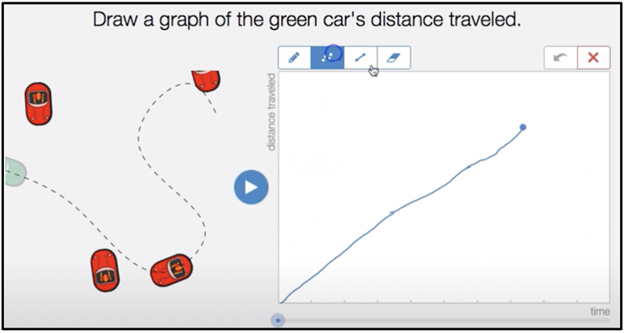Examining Students’ Practices in Algebra and Function > Module 3

ESP_AF Module 3-Qualitative Analysis of Representations of Functional Relationships
This module uses the Desmos’ Function Carnival task which engages students in analyzing the movement of three rides (Cannon Man, Cars, and Ferris Wheel) and representing the corresponding features of the rate of change and functional relationships. Video clips of student work on the Function Carnival task provide the context for teachers to build on their developing noticing skills with a focus on monitoring and eliciting student thinking


This module could be used alongside a chapter from Teaching Algebra materials:
Chapter 5: Rate of Change
Overview Documents
Module Elements
| 3.1 Function Carnival Teachers will engage with a Desmos Activity titled Function Carnival in which they sketch time vs. distance graphs for three different simulated situations. | Class Materials Instructor Materials |
| 3.2 Anticipate Student Thinking on Function Carnival Teachers anticipate student strategies on each of the 3 simulations in the Function Carnival task and are introduced to Desmos Teacher Dashboard. | Class Materials Instructor Materials |
| 3.3 Noticing Student Thinking: Function Carnival Task Teachers analyze video clips of students engaging with the Cannon Man and Cars tasks with a focus on the students’ language and engagement with the technology. | Class Materials Instructor Materials |
| 3.4 Analyzing and Supporting Emergent Student Thinking Teachers engage with noticing one pair of students as they work through the Cars simulation, including deciding what questions they might pose to assess the students’ understanding and support them in making connections between their graph and the underlying mathematical ideas. | Class Materials Instructor Materials |
| 3.5 Monitoring Students’ Work on the Function Carnival Teachers practice monitoring, selecting, and sequencing 6 student groups’ work within a mock Desmos Teacher Dashboard. Teachers note their first impressions of each graph created by the students and then watch videos of each group engaged with the task. Using the learning goals, Teachers are asked to select and sequence three groups that they would have present. | Class Materials Instructor Materials |



